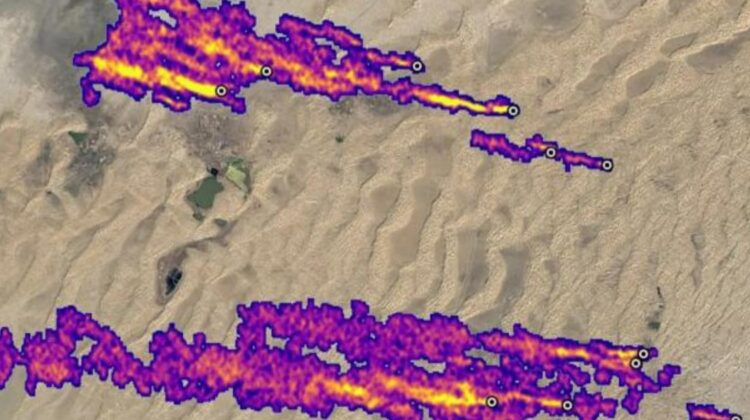
In a groundbreaking revelation, environmental intelligence company Kayrros has leveraged satellite technology to identify the world’s 1,300 largest methane-polluting sites, offering a stark glimpse into the origins of one of the most potent contributors to global warming.
This unprecedented feat of satellite surveillance marks a pivotal moment in the fight against climate change, providing a crucial tool for targeted intervention and mitigation efforts.

Antoine Rostand, co-founder of Kayrros, heralded this development as a game-changer, emphasizing the newfound ability to pinpoint the precise sources of methane emissions. “Previously, we could measure the amount of methane in the atmosphere, but now we really know exactly where it’s coming from,” Rostand told Sky News, underscoring the significance of this breakthrough.
The comprehensive mapping of methane leaks has unveiled a spectrum of polluting sources, ranging from gas wells and pipelines to coal mines and waste sites across the globe. Countries such as Turkmenistan, India, Russia, Australia, and the United States have been identified as hotspots of methane emissions, shedding light on previously obscured environmental hazards.
Armed with this invaluable data, targeted reduction strategies can now be implemented with unprecedented precision, paving the way for tangible progress in curbing methane emissions.

Methane, a potent greenhouse gas, exerts a disproportionate influence on Earth’s climate, contributing to temperature fluctuations and exacerbating the pace of global warming. While methane dissipates relatively quickly compared to other greenhouse gases, its impact on atmospheric temperature is immediate and far-reaching, making the mitigation of methane leaks a pressing imperative.
Efforts to mitigate methane emissions are not confined to satellite surveillance alone. Researchers at esteemed institutions like MIT are actively exploring innovative approaches to capture escaped methane from the atmosphere, offering promising avenues for combating climate change.
On the policy front, significant strides have been made, with the U.S. implementing national methane monitoring and repair policies aimed at eliminating millions of tons of toxic gas over the next decade and a half. Moreover, the Global Methane Pledge, endorsed by over 150 world governments, pledges to slash methane output by 30% by 2030, offering a roadmap for collective action on a global scale.

With the revelation of exact methane leak sources, the path to a cooler, more sustainable future is illuminated. Kayrros remains committed to its monitoring efforts, poised to disseminate its findings to stakeholders worldwide.
In the words of Rostand, “Open-access climate data has a huge role to play in the climate crisis by holding governments and businesses to account.” As Kayrros continues to expand access to climate data and raise awareness of the urgent need for action, a collective endeavor to address methane emissions and safeguard the planet’s future gains momentum.

Leave a Reply